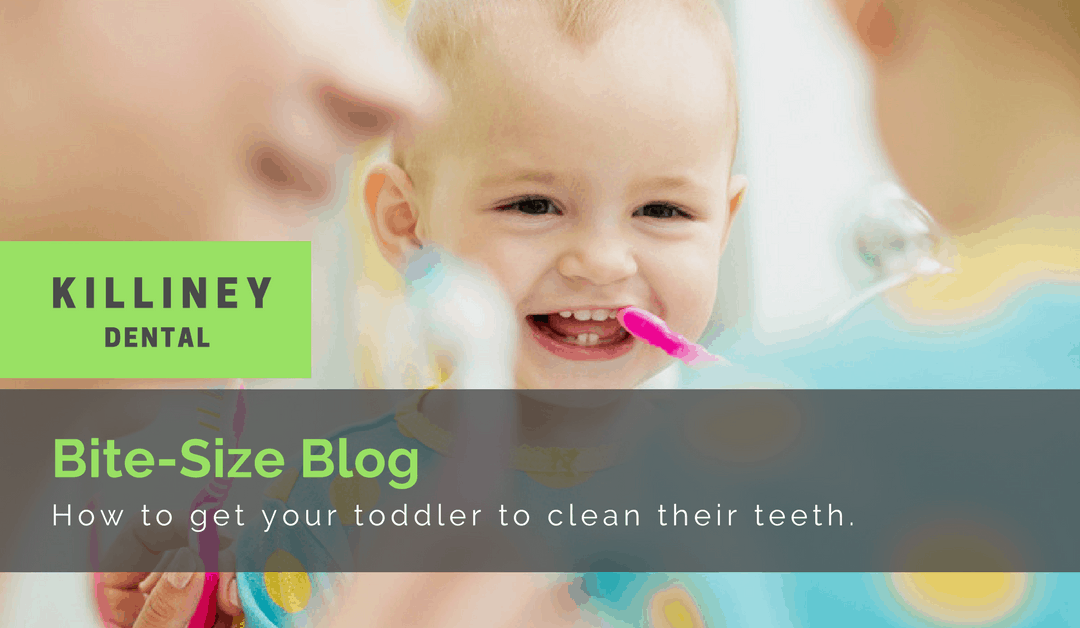You know the importance of dental hygiene. And you know that problems with adult teeth start in childhood. But can you get your toddler to brush their teeth? Or is there a battle every day? Don’t despair. There are ways to make tooth brushing a playground, not a battleground.
First of all, let your child see you brushing your teeth. Most children love to imitate adults, so whenever it’s teeth cleaning time, get your toothbrush out too. If you have older children, make sure that your toddler sees them brushing, and that they get praise and approval for doing so. Your little one needs to see that brushing teeth is a positive activity for everyone, not a cruel and unusual punishment for them alone!
If you’re cleaning your teeth at the same time as your child, you can play a game of “you brush mine and I’ll brush yours”: your child can clean your teeth while opening wide for you to clean theirs. Make sure that you ask them “Are my teeth shiny and clean?” or “Have you cleaned all of them? Have you missed any?” This helps them to learn about thorough dental hygiene while keeping it fun.
Turning teeth brushing into a game is one of the best ways to get a reluctant child to join in. As well as mutual teeth brushing, you can play a game where they blind you with the brightness of their smile. Once they’ve given their teeth a clean, get them to smile, and then pretend to be dazzled, squinting and putting your hands in front of your eyes because their teeth are so shiny. Most children find this hilarious, and want to have shiny teeth to dazzle mummy or daddy.
Ask them what they had to eat that day, or at the last meal, and then go looking for any naughty food that didn’t go to their tummy. So if they had toast and a banana, you might look in their mouth and exclaim “There’s still some toast in there! Naughty toast!” Give their teeth a brush and then say “There, that’s the toast all gone.” This not only makes teeth cleaning more fun, but helps children to learn that the reason they clean teeth is because sometimes food stays there.
Another variant on the “naughty food” game is to pretend to find all kinds of strange things in their mouth. You can act surprised, and say “What’s that in there?”, and when they open wide, pretend to find anything from a dog to a giraffe to a train hiding in their mouth, that needs a good jostle with the toothbrush to move out. Children love the idea of ridiculous things in the wrong place, and will even come up with suggestions themselves for what might be hiding in their mouths.
Favourite TV characters or books can be useful too. Lots of children’s books include a visit to the dentist or a story about cleaning teeth. Why not combine teeth cleaning with story time? Or point out that their favourite princess or cartoon animal has lovely white teeth, and tell a story about that character brushing their teeth twice a day to make them shiny and clean.
Try to avoid telling stories where someone doesn’t clean their teeth and they all fall out. This is likely either to frighten your child (and you’ll get woken up when they have nightmares about teeth going rotten), or to make them curious (which means they refuse to open wide because they want to see if their teeth really will fall out). Ideas about the future are very different for adults and for children. Anything further ahead than a few days just doesn’t make sense to a two-year-old. This means it’s a waste of your time telling them that cleaning their teeth now will stop problems when they’re older. Concentrate on the positives of having clean teeth, rather than trying to warn them about the negatives of not cleaning.
Some parents don’t like to “bribe” their child, but there’s nothing wrong with using some positive reinforcement. Have a star chart in the bathroom and give your child a star every time they have their teeth properly cleaned. But remember, time is different for toddlers. A star chart for young children shouldn’t take more than a few days to fill in. Don’t put days and times on the chart, or you risk getting to the end of the chart and having lots of empty spaces, followed by an argument about whether the chart is “finished”. Just have five or six empty boxes, and once each one has a star in it, then your child gets a reward.
Teeth cleaning for toddlers doesn’t have to be a battle. If you set a good example, make toothbrushing fun, and reinforce the positives, you can get to the end of the day a little less stressed, with a happier child who has a healthy clean mouth.
Author: Dr Gerald O’Connor BDS NUI (hons)
Dr Gerald O’Connor is the principal dentist and owner of Killiney Dental. Dr O’Connor graduated with an honours dental degree from University College Cork in 1998. He has since worked as a general dental surgeon in the UK and Ireland and has over 20 years experience in the dental field, with a particular interest in cosmetic and restorative dentistry. Dr O’Connor is an active member of the Irish Dental Association, sitting on its Quality Patient Safety Committee, and is a Irish Dental Council registered dentist.


